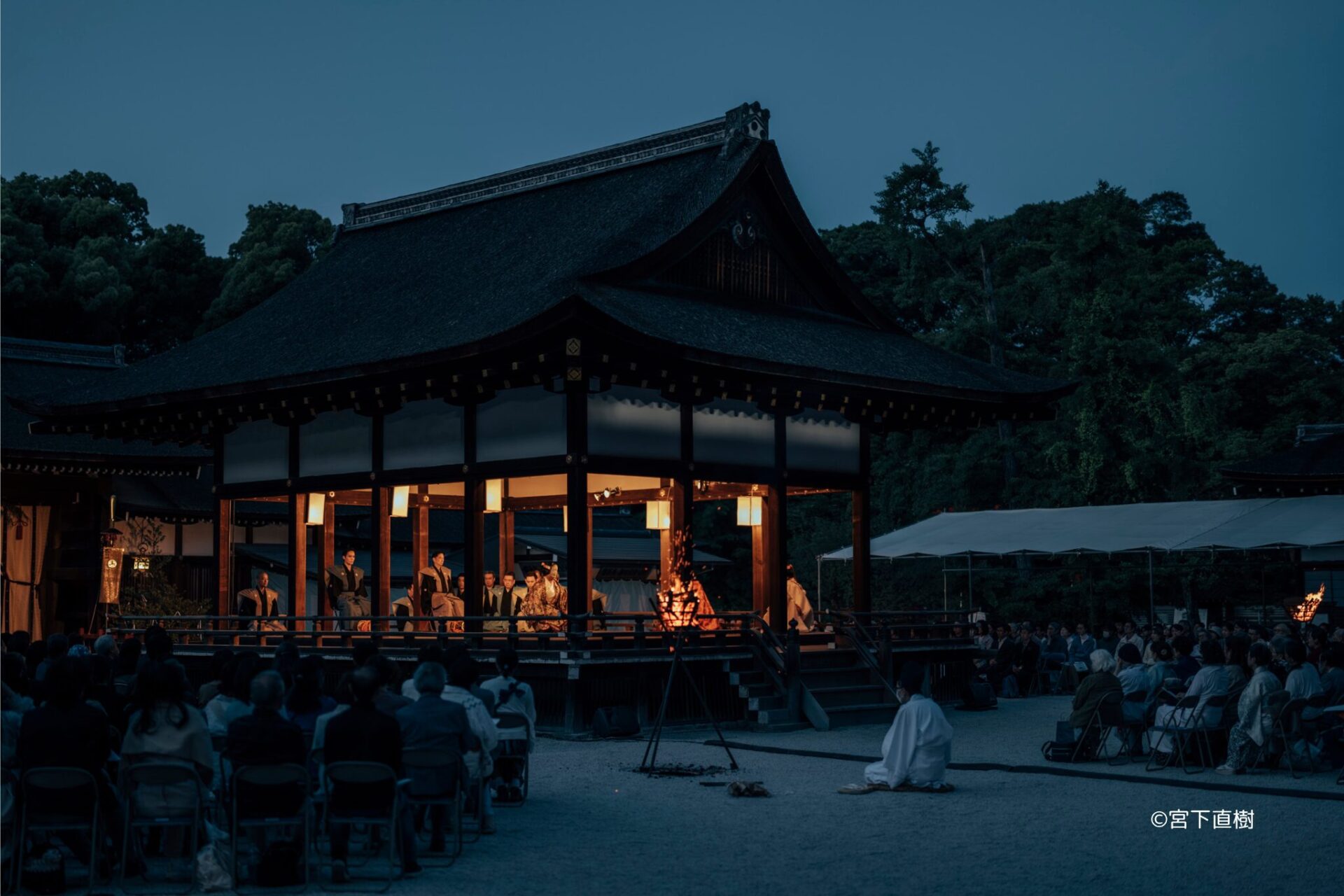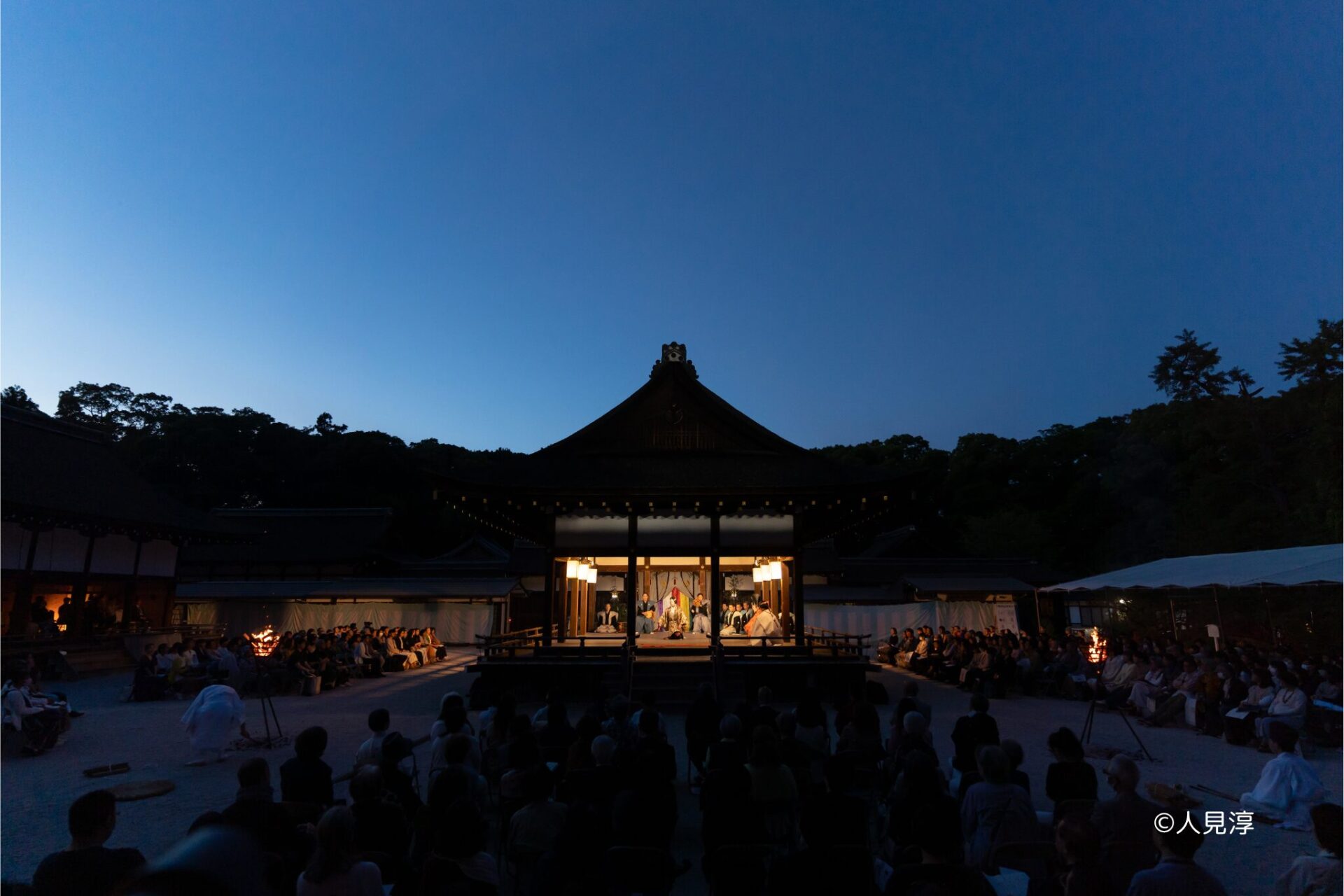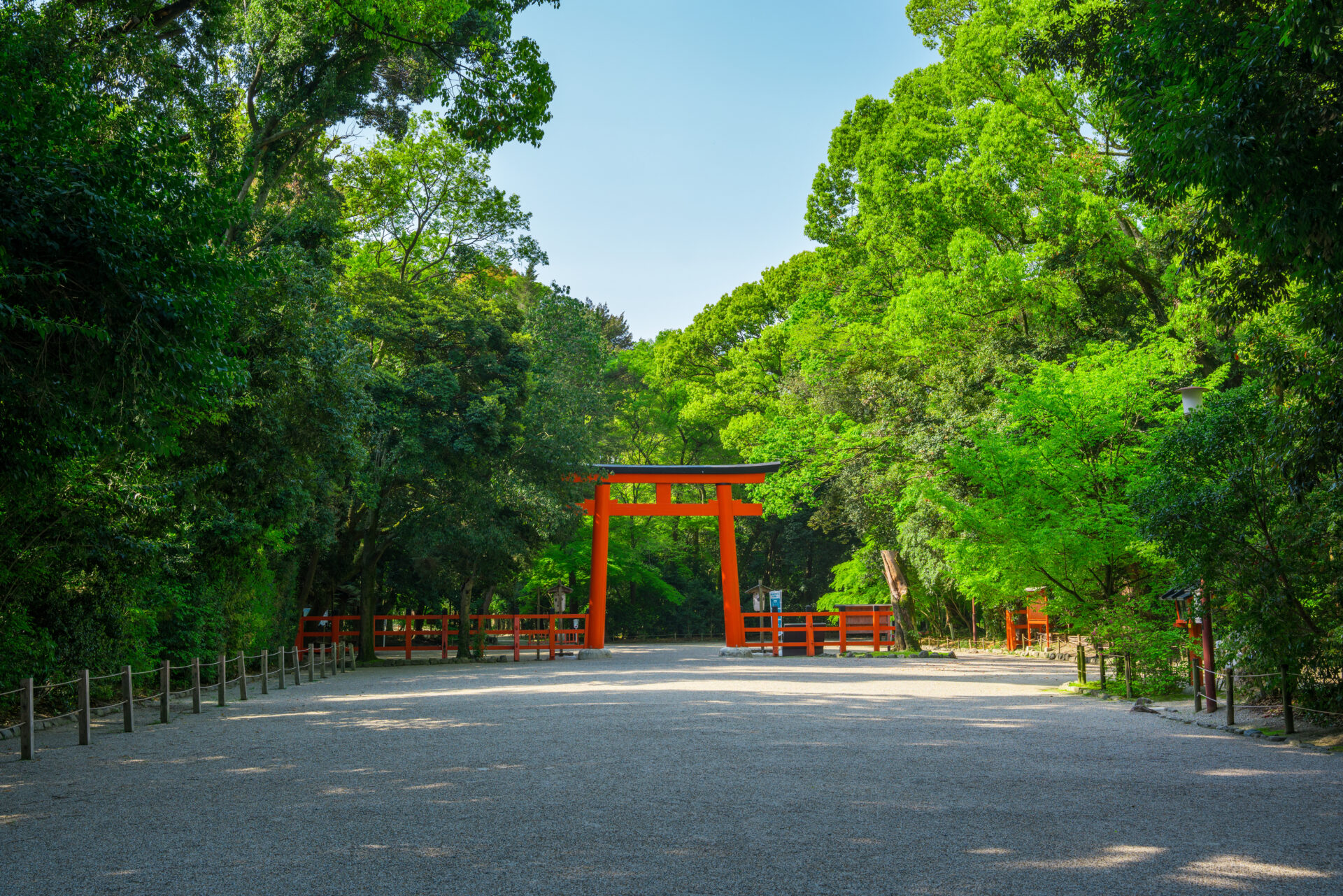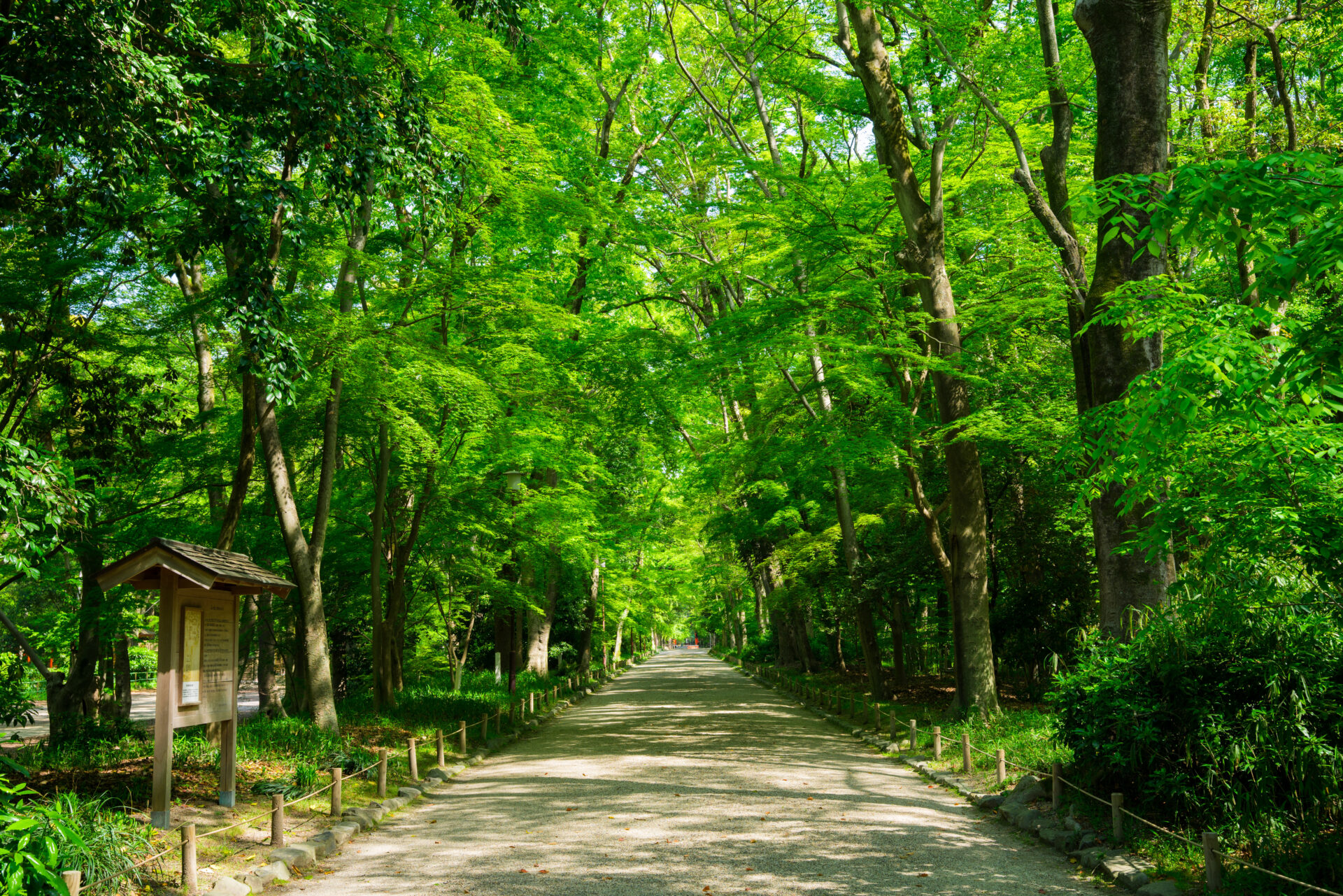■Event Report■
Tadasu Noh - A Noh festival held at Tadasu no Mori Forest at Shimogamo Shrine
Tadasu Noh
- What Tadasu Noh Is
"Tadasu Noh" is performed in the dance hall of Shimogamo Shrine in Kyoto.
This is a special Noh performance held in the forest.
As bonfires light up in the Tadasu Forest at dusk, the sounds of flutes and drums gently echo, and the audience experiences a moment when nature and performing arts blend together.
This event is a revival based on the "Tadasugawara Kanjin Sarugaku" that was held approximately 550 years ago.
It was performed again in 2015 on the occasion of the Shimonen Sengu (yearly rebuilding of the shrine) at Shimogamo Shrine, and has now become an established annual event held after the Aoi Festival.
The rustling of leaves, the chirping of birds, and even the crackling of firewood all become part of the stage, and the Noh performance itself progresses in harmony with nature.
Tadasu Noh is a festival that depicts the time when people and nature coexist, quietly evoking the image of "prayer" that lies at the origin of Noh.
And at its core is the unique worldview of this land, where forests and people live in harmony.
Next, we will take a closer look at the appeal of Tadasu-noh.
Features of this Plan
An Ancient Forest in the Heart of Kyoto

Tadasu-no-Mori, literally “Forest of Purification,” is a rare stretch of ancient woodland located in the heart of Kyoto. Covering approximately 12 hectares, this primeval forest has survived since the Jomon period and is home to a diverse range of plant species. Often referred to as a “living time capsule,” the forest forms part of the sacred grounds of Shimogamo Shrine, a UNESCO World Heritage Site. It stands as a testament to Japan’s enduring reverence for nature, where the spiritual and the natural have long been intertwined.
The Spiritual Significance of Shrine Forests

In Shinto, Japan’s indigenous belief system, natural elements such as trees, rocks, and rivers are believed to house kami—divine spirits. Sacred forests known as chinju no mori were traditionally preserved around villages to serve as buffers between human life and the divine realm. Tadasu-no-Mori is one of the most well-preserved examples of this tradition, having remained largely untouched for over a thousand years, even as modern Kyoto grew around it.
Tadasu Noh: A Performing Art in Harmony with the Forest

Tadasu Noh is an annual outdoor Noh dedication held in this sacred forest. Rather than relying on modern stage (maiden) lighting or amplification, the dedication is illuminated by torchlight and accompanied only by traditional instruments.
When the music pauses, natural sounds emerge: the crackling of firewood, the patter of rain on leaves. Human dedication blends into the rhythms of the forest, and the boundaries between art and nature begin to dissolve.
On the day of this year’s dedication, it rained steadily. Nonetheless, the dedication went ahead. The sound of raindrops hitting the forest canopy became a new “natural instrument,” adding to the chorus of chants and drums. The result was a soundscape found nowhere else—raw, fleeting, and deeply immersive.
Reverence for All Living Things

The Japanese phrase yaoyorozu no kami refers to the “eight million gods,” a poetic way of expressing the belief that spirits dwell in all things. At Tadasu Noh, the actor seems not only to perform a role but to embody the voice of the forest itself. The audience, in turn, experiences moments when the line between humanity and nature becomes beautifully blurred.
Passing on the Culture of Ma (Sacred Space and Silence)

Tadasu Noh expresses a uniquely Japanese sensibility: the value of quietude, stillness, and the space between sounds—known as ma. The dedication avoids artificial lighting and sound, inviting the audience to spend 90 minutes immersed in darkness, silence, and subtlety. In doing so, it offers a rare chance to reconnect with a sensibility that modern life too often pushes aside.
Attending Tadasu Noh is not merely a cultural outing—it is a contemplative act. It invites us to consider how we live with nature, how we listen, and what it means to share space with the more-than-human world. It is a quiet but powerful reminder that harmony is not something to be imposed, but something to be felt—and honored.
Usage overview
- remarks
The official website is here:https://tadasu-noh.jp/
(Please wait a little while for sales to begin in 2026.)








 Kyoto
experience
Kyoto
experience Contact us by phone
Contact us by phone Contact by email
Contact by email